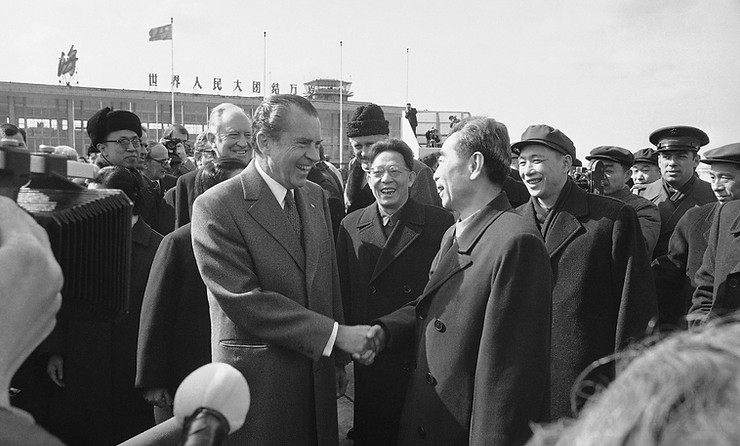If one observes the selection of contemporary books pertaining to U.S-China relations, a theme is apparent: hostile dragons, bold block lettering, rhetoric of urgency, threat, and conflict in the titles, along with other motifs reminiscent of the Cold War era. This made me wonder:

Notice a Pattern?
What are the key social & political developments that have influenced China* and the U.S.’s perception of each other on the global stage?
*Throughout presented research and study on the website, "China" refers to the People's Republic of China established in 1949 following the Communist Revolution.
To answer this question, this research project will outline key developments in U.S.-China relations within the following periods:
Containment: 1949-1971
-
The proclamation of the People's Republic of China (PRC)
-
The Korean War

Engagement: 1979- 2016

New Cold War?: 2016-present
New Cold War?: 2016-now

Rapprochement: 1971-1979
-
The Sino-Soviet Split
-
President Richard Nixon's visit to China
-
Acknowledgement of the One-China Policy

-
Rise of Xi Jinping Thought
-
Beginning of U.S.-China trade war during Trump's presidency
-
Biden-Xi San Francisco Meeting
-
Political, economic liberalization under Deng Xiaoping
-
Tiananmen Square Massacre
-
China's entry into the WTO (World Trade Organization)
About
My name is Kristina Danilenko, a senior at Christ the King. With a long lasting interest in foreign cultures stemming from my experiences living abroad, I found myself especially curious about international politics and understanding diverse historical perspectives. Through this Horizon Project, I hope not only to build my research skills, but also continue to question and grow my understanding of the world. In my spare time, you will find me reading with a cup of tea in hand, watching The Mandalorian with my parents, gaming, and (occasionally) taking unintentional 2+ hour long naps.


